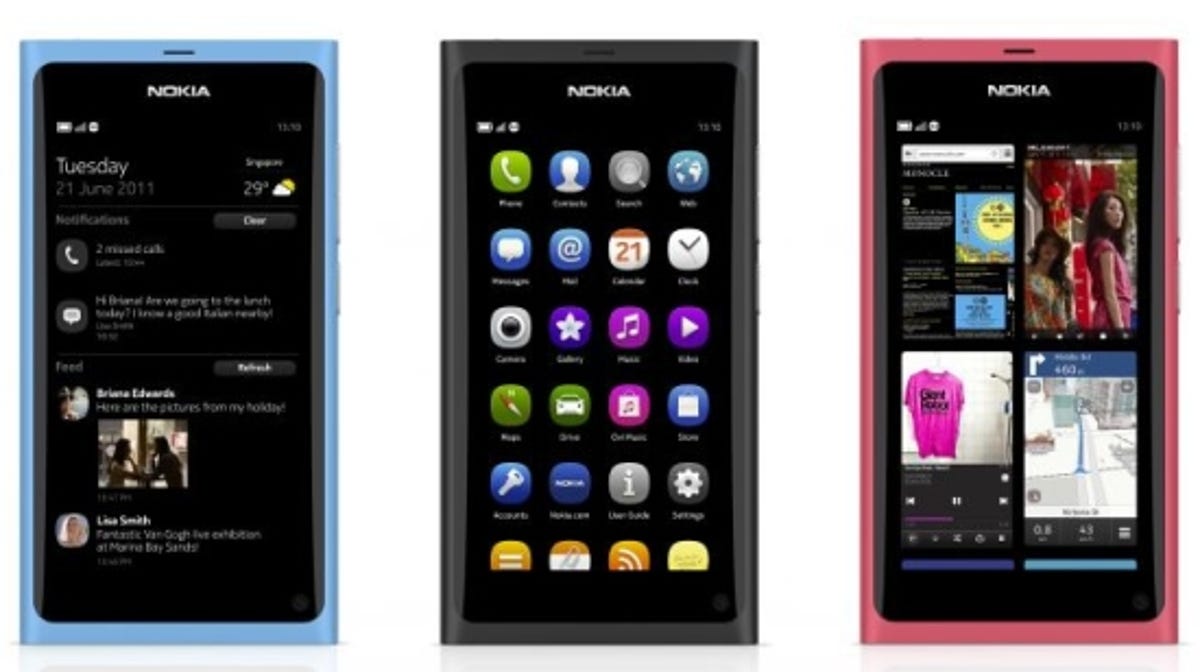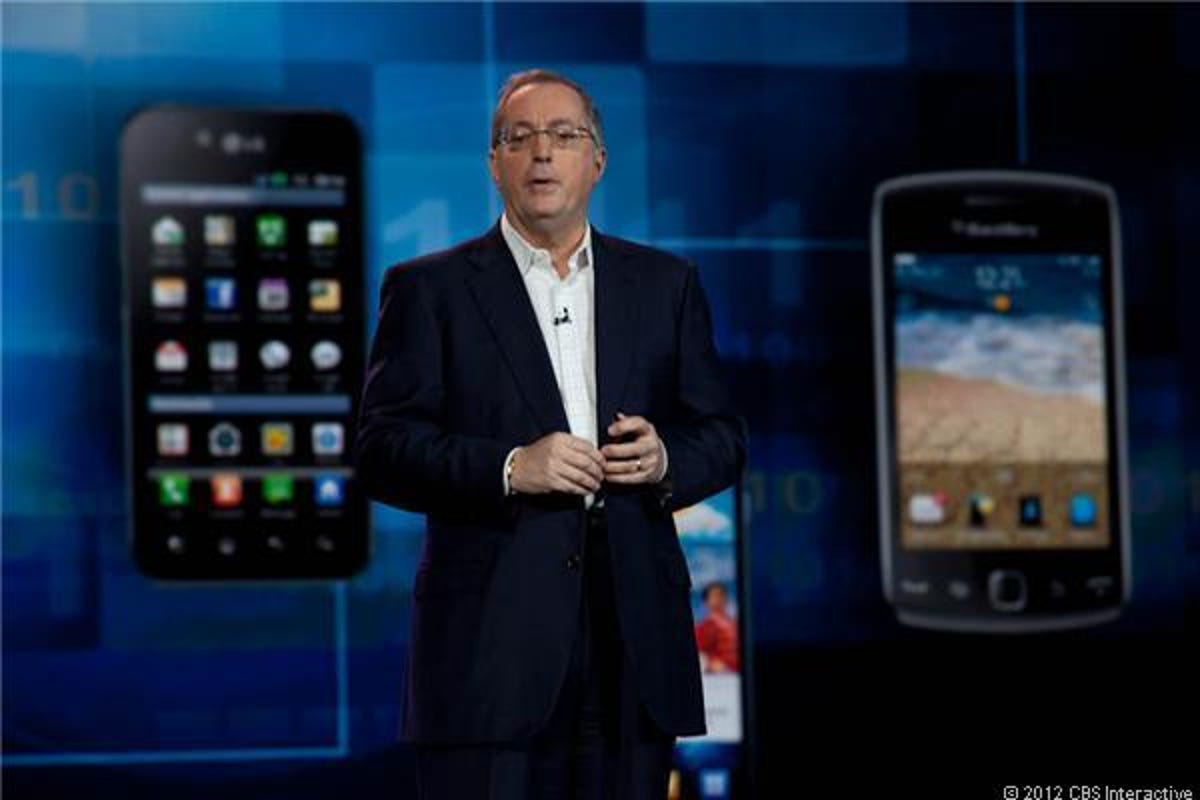You’ve probably never heard of Tizen, but the companies behind it are some of the most recognizable brands in the tech industry.
Tizen draws its heritage from the likes of Nokia and Intel through their aborted MeeGo initiative, as well as Samsung Electronics, Verizon Wireless, and Vodaphone through the LiMo Foundation. Now it’s under the direct control of Samsung and Intel, two companies steering the development of an operating system that claims to be more open and customizable than Android.
Tizen has come about in some ways as a reaction to the growing dominance and influence of Google’s Android operating system. Tizen, which is based on Linux and embraces HTML5, allows the wireless carriers to deliver their own services and wrench back the customer experience from Google. It will help the handset vendors diversify away from their growing dependence on Android, and it will also potentially get Intel into the wireless-chip game.
Related stories
- Samsung to sell first Tizen smartphone next year, report says
li> - Samsung confirms Tizen-based handsets for 2013
- Huawei taps Linux-based Tizen OS for phones
- No, we don’t really need another smartphone OS
The Tizen name will start popping up with increasing frequency over the next few months. Before the end of the year, Tizen phones will start trickling into the market, with NTT Docomo already committing to sell the devices. Samsung has reportedly committed to selling the first phone this year. The initial phones are likely to launch in the second half of the year, though it remains to be seen when they’ll actually make it to the U.S.
When it launches, Tizen will face the same kinds of challenges every new mobile operating system has faced, from the struggle to get developers behind it to even managing to get attention in such a crowded market. This year will see Microsoft step up its push of Windows Phone in conjunction with its Windows 8, while Research In Motion is set to launch its next-generation BlackBerry 10 operating system and that OS’ first two phones later this month. Other attempts include the Ubuntu mobile operating system and Mozilla’s Boot to Gecko initiative.
But Tizen has one large asset behind it: the marketing and technical prowess of Samsung, which in just a few years took its flagging smartphone business and turned it into a world-beating phenomenon.
“It is up to Samsung to drive adoption and awareness of the Tizen platform,” said Julien Blin, an analyst at Infonetics.
Hedge against Android
Tizen offers a level of customization that even Android can’t offer. While Android is open, handset vendors and carriers that use the operating system must follow an agreed-on set of rules to avoid fragmentation.
Companies can “fork,” or heavily customize, Android, but then they no longer get any support from Google or the Open Handset Alliance, and the effort is often deemed too much trouble to be worth it. The most prominent example is Amazon’s Kindle Fire, which uses a version of Android tweaked so that it can’t run normal Google services and apps.
So Tizen is around for companies looking for even more flexibility. The carriers, in particular, see Tizen as a way to prominently place their own services and features on smartphones that ensure they maintain a strong relationship with the subscriber. Rather than Google services, for instance, they would use NTT Docomo services.
“If we become a dumb pipe, our revenue will continue to shrink,” said Kiyohito Nagata, managing director of strategic marketing for NTT Docomo and a member of the Tizen Association.
With “dumb pipe,” Nagata is referring to the phenomenon where the carrier becomes a simple Internet connection for lucrative services and apps delivered by other companies. For the most part, many carriers already deal with this issue with home Internet service, and they want to avoid it on the wireless side.
Some of the handset manufacturers, meanwhile, may see Tizen as an open-source hedge against the possibility of Google competing directly with its partners through its Motorola Mobility unit — something Google has denied it would do.
Samsung, for its part, said Tizen is part of its plan to diversify its dependence on operating systems, and denies that it is a way for the company to break away from Android.
“Google’s been a good partner for us,” Kevin Packingham, chief product officer for Samsung’s U.S. mobile unit, said in a recent interview. The company intends to continue supporting Google.
And why not? It wasn’t that long ago that Samsung was considered an also-ran in the smartphone business, slow to move as nimbler companies such as HTC stole the spotlight with an early embrace of Android. But over the last two years, Samsung has surged into the leadership role, thanks in part to its Galaxy S franchise and a wide range of other Android smartphones and tablets.
A history of failure
Samsung could certainly do worse than Tizen, despite a history for the OS that’s as colorful as it is fruitless.
The LiMo (Linux Mobile) Foundation was formed in 2007 — a year before the first Android smartphone was unveiled by Google and T-Mobile USA — and had quickly lined up big-name members such as Samsung and Vodafone to create an open Linux-based operating system. It seemingly gained some momentum ahead of the Android launch when heavy hitters Verizon Wireless and SK Telekom joined and committed in a big way.
But while Android flourished, LiMo floundered as a half-baked project with more partners than progress. It wasn’t until early 2011 that the first version of the LiMo software launched, but it had long missed the boat. All of the core members had fully committed themselves to Android phones. The platform was abandoned later that year.


Nokia
Nokia and Intel, meanwhile, were each working on their own independent Linux-based projects, Maemo and Moblin, respectively. But in 2007 they decided to merge their efforts into MeeGo. But the leadership shakeup that resulted in former Microsoft executive Stephen Elop taking over Nokia as CEO in 2011 resulted in the company dumping MeeGo in favor of his former’s company’s own burgeoning platform.
After MeeGo was scrapped, Intel was again left without a partner and direction. But the wireless carriers saw potential in the work it had done, and urged the chip company to work with longtime LiMo member Samsung. Samsung had proven it could foster the development of an upstart operating system through Bada, its homegrown platform that had seen moderate success in select regions around the world. By the end of 2011, Tizen was formed and replaced the LiMo platform.
Avoiding past mistakes
The Tizen consortium is aiming to move quicker than before, conscious of the mistakes that hobbled it in the past.
Rather than development by committee, the work on Tizen is largely led by a steering group compromised of employees of Intel and Samsung. The Tizen Association is a group filled with members who also contribute code and suggestions, but the core development is under the guidance of the two companies.
“Sometimes minutia can overwhelm you,” said Elliot Garbus, vice president of the software and services group for Intel and a board member of the Tizen Association.
Intel and Samsung were chosen to keep each other honest. Intel is around to ensure that Samsung doesn’t attempt to embed all of its technology and dominate the operating system at the expense of other handset vendors, while Samsung is there to ensure the OS will work with any mobile chip.


James Martin/CNET
Intel, however, does hope Tizen will breathe some life into its still nascent mobile-chip business. Though the company has struck some partnerships with companies to get chips in their phones, it still has a limited presence, with none of the U.S. carriers particularly interested.
“Having a new platform creates a new opportunity,” Garbus said.
Well aware of the app development dilemma, the group is focusing on fully supporting HTML5, though Tizen will also have the option of native apps for more-sophisticated programs.
When consumers will see Tizen phones in the U.S. remains unclear. Sprint Nextel has committed to selling Tizen phones, but Ryan Sullivan, director of device development for the carrier, said it was still early in the life cycle.
NTT Docomo provides a hint of how they may be positioned. Nagata said Android phones would remain the high-end option, while Tizen would work as a low-end smartphone or option for consumers upgrading from a basic phone.
Using an awkwardly phrased analogy, Nagata spoke of the opportunity for Tizen to foster the development of new businesses.
“We want to launch and create our future babies,” he said.
Updated, 2:34 p.m. PT: Reworded to note that the OS on Amazon’s Kindle Fire has been altered to block the use of normal Google services and apps.



